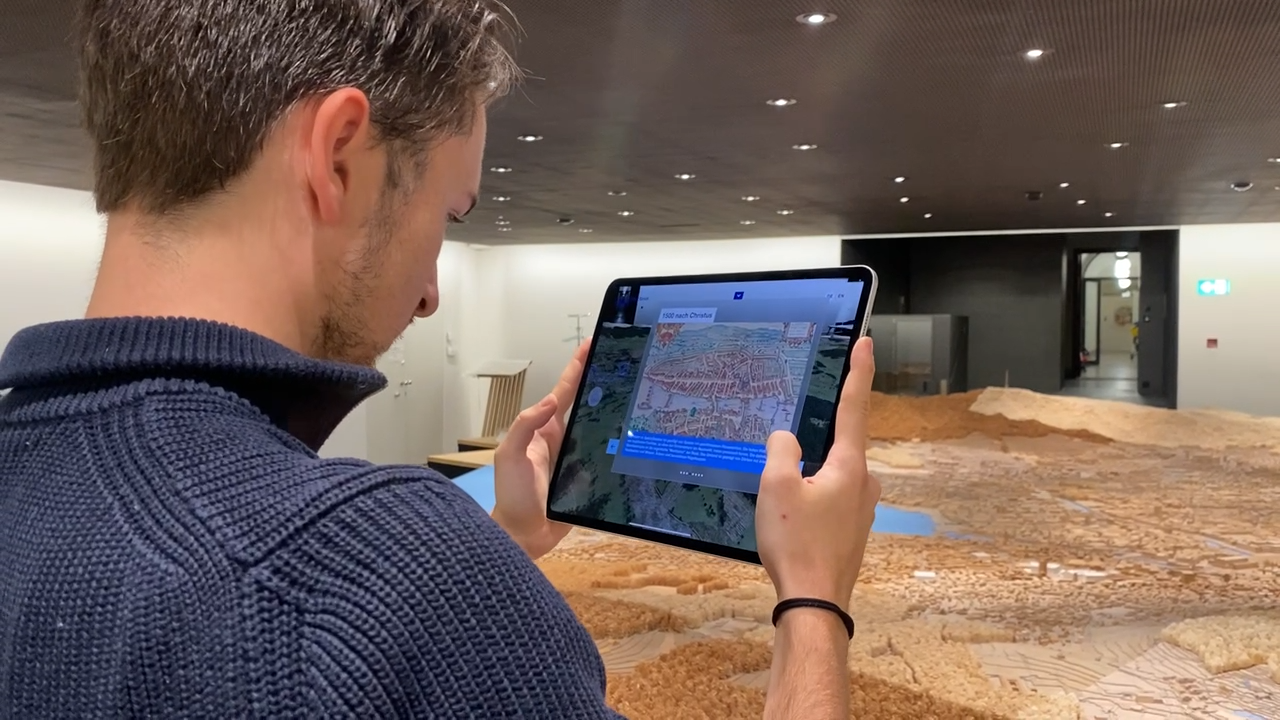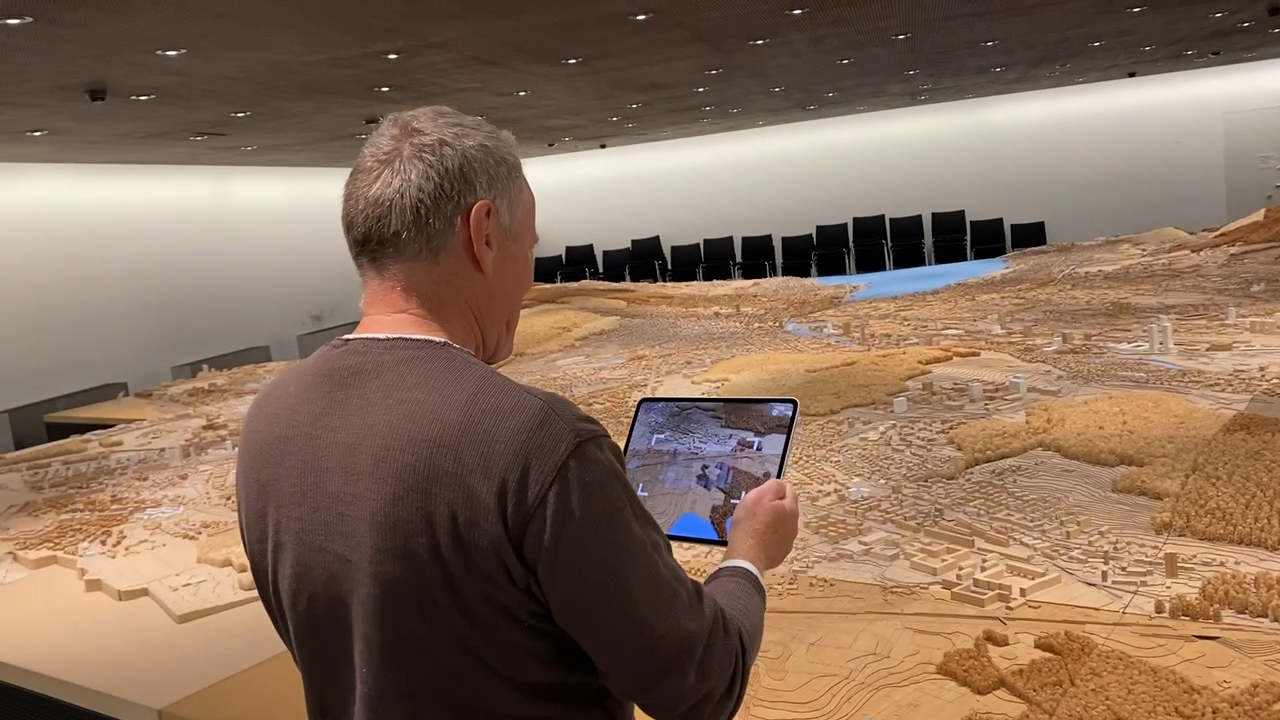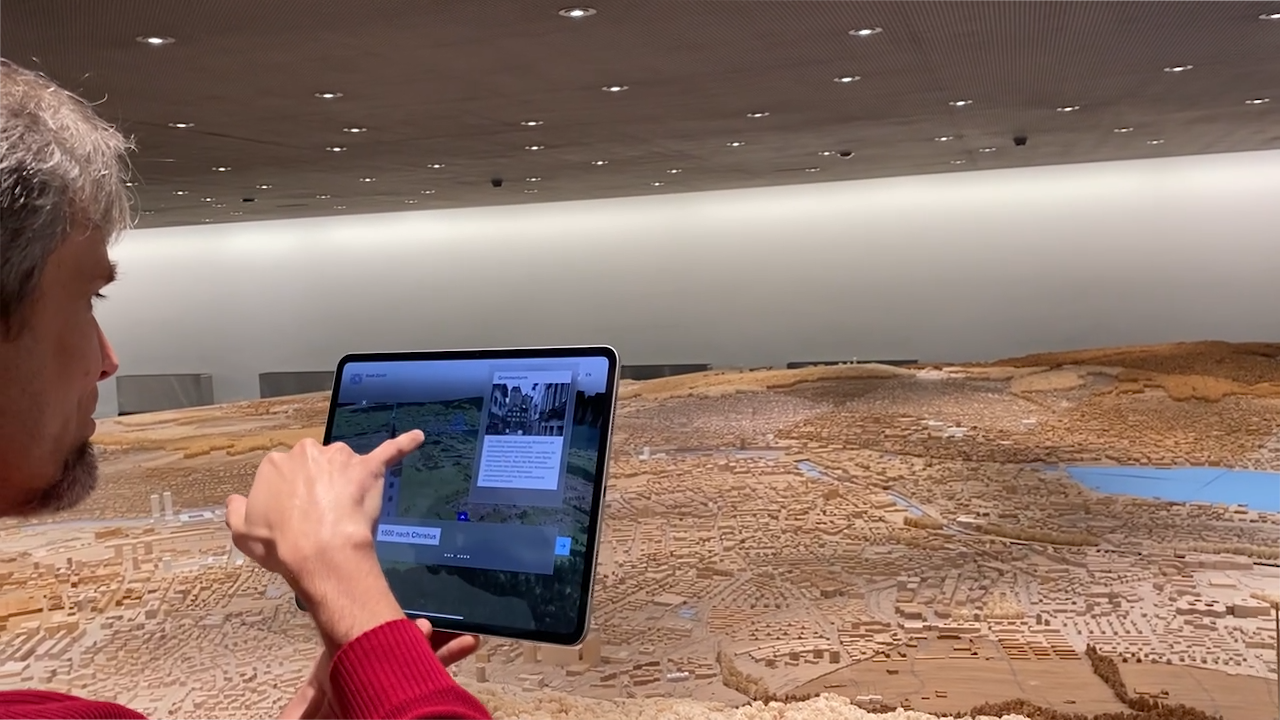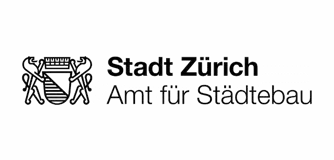
Zurich City Model AR
For decades, the physical model of Zurich has been a central location for urban planning, communication and dialogue.
Together with the Zurich Office for Urban Development (AfS) and the OIZ, afca. is expanding the model to include a digital dimension – an augmented reality application that supplements the real model with interactive, data-based and narrative content.
This creates a novel, hybrid experience:
a physical model that comes to life through the digital layer – with topics such as city history, climate strategies, spatial development and mobility. Visitors, experts and learners can experience Zurich in space and time and discover new connections between the past, present and future.

Features
The project combines a physical city model and digital enhancements to create a hybrid system:
Interactive themed stories – such as ‘History of the City’, ‘Geography of the City’, ‘Cycling Strategy 2030’ or ‘Urban Climate’
AR enhancement of the physical model – digital layers such as zone plans, tree models or historical time slices
Tablet app for meta-space experiences – optimised for performance, user-friendliness and immersion
Authoring tool – intuitive platform for creating and maintaining story content and map layers
Role concept – administration, authors and public with graded permissions
Accessible UX – multilingual, clearly structured, with a didactic focus on spatial understanding
Current status
The project is currently being actively implemented and is undergoing continuous iterative testing. The ongoing concept and implementation phase (2025) includes:
Development of guidelines for interior design, technical implementation and content expansion
AR prototype with digital tree integration and registered model overlay (proof of concept)
Wireframes und UI flows flows for the tablet app (including story navigation, legends, map layers, video integrations)
UX testing by internal and target groups through test runs with a focus on stability, tracking and UX flows
System architecture design with authoring tool front end, backend logic and interfaces to municipal IT (Active Directory, CMP)
Internal storyboards for the thematic series ‘History of the City’ and ‘Geography of the City’ with chronological scenes from Zurich 3000 BC to the present day

Further development & outlook
The next step is to implement the basic package, which defines core functions and AR fundamentals. This is followed by the development phase, in which additional themed stories, data layers and forms of interaction are created.Detailed concept autoring tool & story system
Integration of AR registration elements in the model room
Implementation of testing findings from internal and external test rounds
User testing II with a focus on accessibility and multilingualism
Creation of documentation & operating manuals
Establishment of sustainable content pipeline for future topics (e.g. energy, biodiversity, urban development 2050)
Detailed concept autoring tool & story system
Integration of AR registration elements in the model room
Implementation of testing findings from internal and external test rounds
User testing II with a focus on accessibility and multilingualism
Creation of documentation & operating manuals
Establishment of sustainable content pipeline for future topics (e.g. energy, biodiversity, urban development 2050)
In the long term, the Zurich city model is intended to function as an interactive city laboratory – a space in which spatial data, stories and questions about the future converge in a shared, experiential platform.
